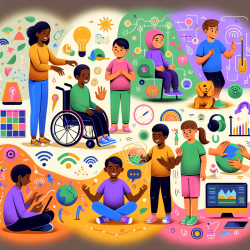The landscape of mental health services has undergone a significant transformation, particularly in the wake of the COVID-19 pandemic. Tele-mental health services have emerged as a viable and effective alternative to traditional face-to-face consultations. A recent research article titled "Acceptability of Tele-mental Health Services Among Users: A Systematic Review and Meta-analysis" sheds light on the acceptability, usability, and satisfaction levels associated with these services.
For practitioners in the field, understanding these findings is crucial for improving service delivery and enhancing patient outcomes. Here are some key insights from the research and practical tips on how to implement them:
High Acceptability Among Users
The study found that tele-mental health services have a high acceptability rate among both beneficiaries and providers. Specifically, the pooled acceptability among beneficiaries was 71%, while among providers, it was 66%. This indicates a strong willingness to adopt tele-mental health services.
- Actionable Tip: Leverage this high acceptability by actively promoting tele-mental health services to both patients and providers. Highlight the convenience and accessibility these services offer.
Factors Influencing Acceptability
The research identified several factors that influence the acceptability of tele-mental health services. These include the type of mental disorder, the year of publication, participant category, and the quality of the included studies. Understanding these factors can help tailor services to meet specific needs.
- Actionable Tip: Customize tele-mental health services based on the specific mental health conditions and demographics of your patient population. This targeted approach can enhance acceptability and effectiveness.
Usability and Satisfaction
The study also assessed the usability and satisfaction levels of tele-mental health services. The pooled usability rate was 66%, with higher usability reported among beneficiaries compared to providers. Satisfaction is closely linked to usability and is a key metric for assessing service quality.
- Actionable Tip: Invest in user-friendly tele-mental health platforms and provide training for both patients and providers. Enhancing the usability of these platforms can significantly improve satisfaction levels.
Challenges and Solutions
While the findings are promising, the study also highlighted some challenges, such as concerns about privacy and the need for personalized services. Addressing these challenges is essential for the successful implementation of tele-mental health services.
- Actionable Tip: Implement robust privacy measures and consider integrating artificial intelligence to provide personalized mental health services. These steps can help overcome barriers and enhance the overall effectiveness of tele-mental health services.
Encouraging Further Research
The research underscores the importance of ongoing studies to better understand the long-term effectiveness and user perspectives of tele-mental health services. Practitioners are encouraged to stay updated with the latest research and contribute to this growing field.
- Actionable Tip: Participate in webinars, conferences, and other professional development opportunities to stay informed about the latest research in tele-mental health. Sharing insights and experiences can also contribute to the collective knowledge base.
In conclusion, the high acceptability, usability, and satisfaction associated with tele-mental health services present a promising outlook for their integration into mainstream mental health care. By understanding and implementing the key findings from recent research, practitioners can enhance service delivery and improve patient outcomes.
To read the original research paper, please follow this link: Acceptability of Tele-mental Health Services Among Users: A Systematic Review and Meta-analysis










